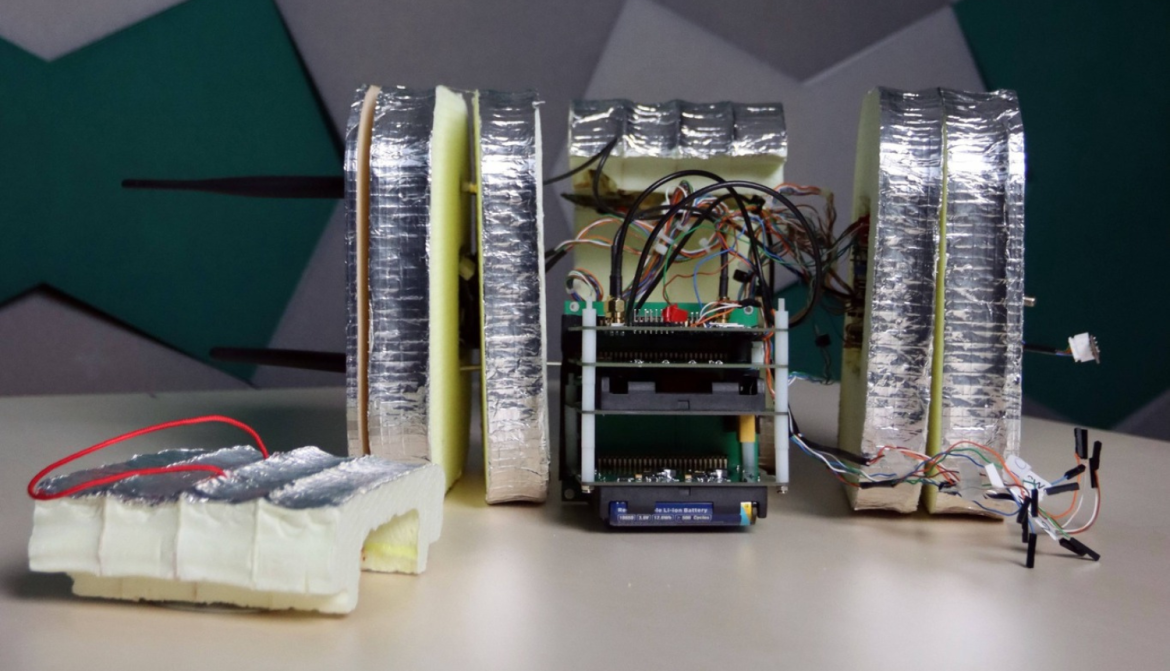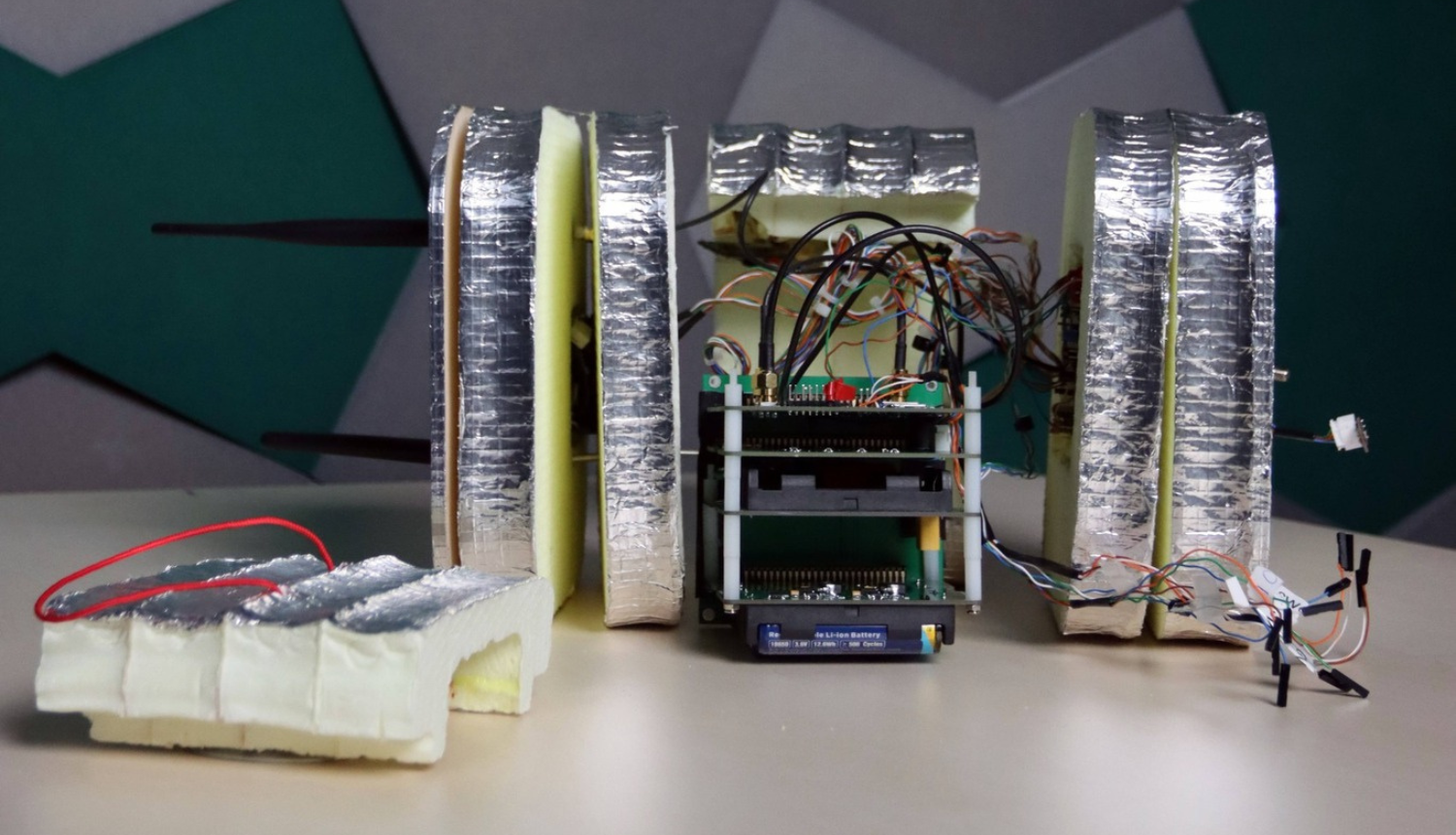On Friday, November 15th, students from Ventspils University of Applied Sciences are planning to launch the IRBE-6 probe into the stratosphere. This is a probe that rises higher than the clouds and airplanes, into areas where wind speeds exceed 100 kilometers per hour, temperatures drop below -40°C, and the sky no longer appears blue, but black. Despite the harsh conditions, the probe continuously captures images with three cameras, takes measurements with various sensors, and maintains constant communication with Earth. It almost sounds like a space technology project, but it’s actually part of the Bachelor's degree program in Electronics Engineering at Ventspils University of Applied Sciences, and it is developed every year by third-year students. This is the most effective way for students to quickly learn how to apply theory in practice by solving real-world problems, and this approach is used at the best technology universities, where some traditional lectures are replaced with hands-on projects. In these projects, student teams, under the guidance of mentors, encounter various challenges and work to find solutions while learning not only technical skills but also project management nuances.
Today, the technology sector expects students to demonstrate both their knowledge and their ability to apply it practically. If a student can show that they have developed such a probe, there is no doubt about their skills in the eyes of potential employers. It’s no wonder that the best students from Ventspils University of Applied Sciences manage to secure internships, even at the European Space Agency.
The development of the stratospheric probe ensures a well-rounded technological education and provides significant experience in managing complex projects. In addition to technical knowledge, engineers must also understand project planning and management processes.
Program director Jānis Šate explains the need to include such projects in the study process: “From a technological standpoint, the development of the stratospheric probe is a very versatile project. For example, students need to create a navigation system that determines GPS coordinates so that the trajectory of the probe's flight can be tracked after launch. Navigation alone, without a communication system, is useless because the coordinates must be sent to the student team. Therefore, a communication system also needs to be created, which must provide communication even hundreds of kilometers away, as well as when the probe has already landed. To ensure this functionality, students have primarily developed a communication system similar to the one used by Earth’s artificial satellites. During the probe's mission launch, a base station designed for satellite communications can be used. Once the probe has landed, it is no longer visible or reachable from any base station, and thus communication is maintained using the mobile network.”
In addition to communication and navigation, the probe is equipped with three cameras that film the Earth’s surface, the horizon, and the balloon. The balloon is filmed to observe the exact moment it bursts.

The probe also includes pressure, temperature, and inertial measurement sensors, an electrical power system, and an embedded computing system. As a result, during the development of the probe, students acquire a broad range of skills. Compared to other projects, a critical factor is that the probe must operate under stratospheric conditions. This means that all the electronics must remain stable even at temperatures of -40°C, where the equipment is constantly shaken by winds exceeding 100 km/h.
Another important aspect that students learn is teamwork, project planning, and execution. Modern young people are often very impatient and tend to solve problems with the approach of "let's experiment until it works." With a stratospheric probe, this is not possible. Once the probe is released from the hand, the balloon rapidly lifts it into the air, and that’s it. What happens next depends entirely on how well all the preparation, design, and testing were done — there is no second chance. This teaches students to plan carefully and evaluate risks, which, alongside technical skills, is crucial when developing new technologies. If there are mistakes in the project, this will be the moment when the probe is last seen. No one will know where it has flown or landed, and the months of work will literally be lost to the wind.
However, if the project succeeds, it gives students confidence in their abilities — if they can carry out such a project, they will be able to tackle other challenges in the technology sector as well. It is also worth mentioning that developing such probes is very similar to satellite development, and this approach is used worldwide in the teaching of satellite technology. A close example is the European Space Agency's BEXUS program. Therefore, we can say that these students are taking the first step towards becoming space technology engineers.
Despite the fact that developing such a probe is certainly not easy, it is a fantastic experience. From the complex development phase of the probe to chasing it down in a car, where no one knows exactly where the probe will land.”
This year, the IRBE-6 team includes students Rodrigo Laurinovičs, Mārtiņš Leimants, Sandis Kaģis, Artūrs Tīģeris, Marta Anete Vinniņa, and Aksels Ķirsons.
